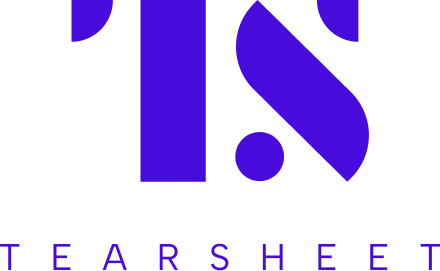This post was originally included as part of an ebook that I published alongside the launch of my book, Tradestream, entitled “Tradestreaming and the Future of Investing”. The content was so good I wanted everyone to have access to it. Mick Weinstein, ex-Editor in Chief of Seeking Alpha contributed this piece as part of the introduction to my new book.
**********
My father was a young attorney with a few bucks to invest when he stepped in a local brokerage house in Wilmington, Delaware. It was the summer of 1970. “You’d open the door to smoke wafting through the air and the aroma of strong-brewed coffee, and ?nd 20 or so retired altacockers sitting around a sort of minitheater, peering up at the electronic quotes rolling by on the wall, plotting their next moves,” he recalls. On a nearby table, a few loose-leaf binders issued by Standard & Poor’s held one-pagers on the most commonly traded stocks: management bios, basic ?nancials, price history. “Oftentimes you’d go to research a stock from the S&P binder and its page would be missing,” my dad recalls. “Some of these guys didn’t read so fast, so they’d sneak a few sheets home in their jacket pocket to peruse after watching Cronkite.”
Behind the altacockers were the brokers, including my father’s broker-to-be, Jack. For this generation of stock market investors, the brokers had all the real information—and clout. Upon receiving fresh research from his ?rm’s Wall Street analysts (who enjoyed privileged access to company executives and industry data and trends), Jack would dial up his clients selectively to suggest buys and sells that drove his own, entirely commission-based income. On the golf course and at dinner parties, the young professionals bragged to one other about the stocks that their broker “put them into,” and Jack was held in high esteem by my father and his community peers.
For my father’s generation, stock market investing was de?ned by information scarcity and personal trust in your broker. Fast forward to 2010. Today’s Internet has almost completely wiped out this scene from just 30 years ago. Today’s individual investors confront a market characterized by information overload and a need for personal decision making. The good news: No missing pages on that loose-leaf binder—you can get massive amounts of information and opinion on any given stock with the click of a mouse. The bad news: There’s no Jack. You’re on your own to make sense of it all and, unless you have the means to hire an asset manager, to build your portfolio yourself.
So where to begin? Most individual investors today are familiar with the large portals like Yahoo Finance and MSN Money that allow you to enter your portfolio or watchlist and receive mounds of data, breaking news and traditional journalism on stocks you own or follow. The portals also offer some powerful stock screens that can help an investor with speci?c strategic goals to access stocks, ETFs or other products that meet those objectives. Seeking Alpha augments this content with informed, well-researched opinion and analysis from market professionals and sector experts, plus free conference call transcripts to read what industry leaders are saying about their business and sectors. Instant access to regulatory ?lings (coupled with Regulation FD) grants everyone immediate access to company reports, important developments, top investors’ moves, and corporate insider stock sales/buys. And new players in the market like Covestor and other “crowdsourcing” sites aim to bubble up the best individual investors and stock pickers, so individual investors can lock onto their ideas or even copy their trades.
So where’s today’s Jack in all this? Or, given the fact that investment goals differ so greatly, perhaps the question is better phrased: Where’s your Jack in all this? The bottom line is that you need to build your own Jack today. That means you need to do more homework, but once you’ve found the tools that work well for you, the process of portfolio building is much more rewarding and, likely, lucrative than it was a generation ago.
*—> Like what you see? Hey! Don’t forget to subscribe to the free Tradestreaming newsletter for updates, tips, and special offers
Mick Weinstein was Editor in Chief of market and investment analysis website Seeking Alpha until April, 2010. A graduate of the University of Michigan, he now lives in Israel with his family.


 or understand better about an industry than the market participants?
or understand better about an industry than the market participants?